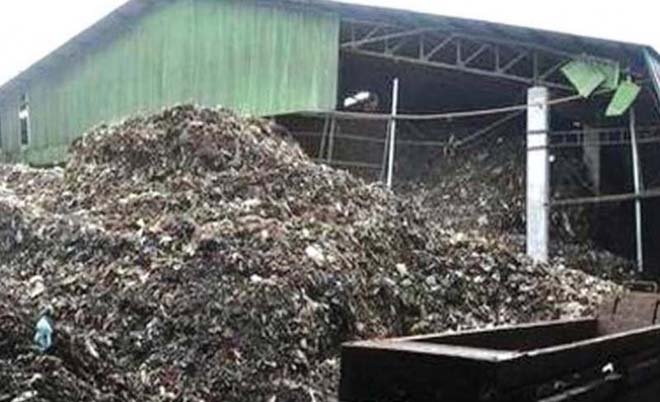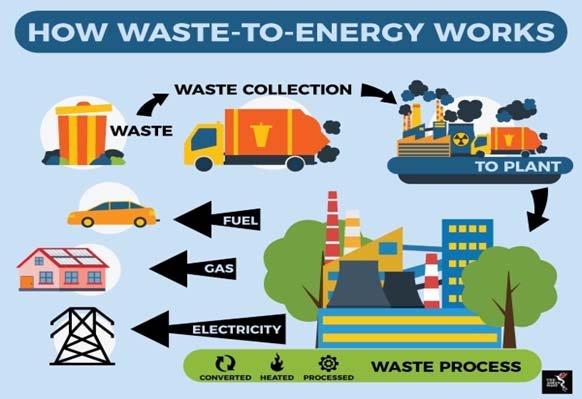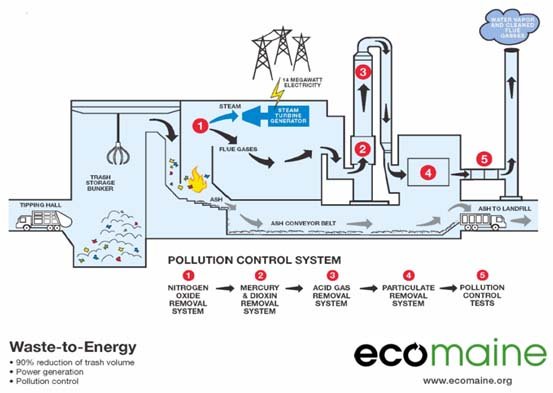WASTE-TO-ENERGY PLANT

WHY IN NEWS?
- Recently, the Kerala government recently announced the State’s first waste-to-energy project in Kozhikode.
MORE ABOUT THE NEWS
- The Kerala government recently announced the State’s first Waste-to-energy project in Kozhikode.
- The planned facility is expected to be built in two years and generate about 6 MW of power.
- There are around 100 waste-to-energy projects around the country but only a handful of them are operational.
ABOUT KOZHIKODE PROJECT
- Kozhikode has a population of about 6.3 lakh and generates approximately 300 tonnes per day (TPD) of waste.
- Of this, around 205 TPD is biodegradable and 95 TPD is nonbiodegradable.
- The municipality is currently using the biodegradable material to generate organic compost in various composting plants.
- Of the nonbiodegradable waste, only about 5 TPD out of the 95 TPD is recycled.
- The remaining non-recyclable dry waste could be used to generate power at the waste-to-energy plant.
WHAT ARE WASTE TO ENERGY PLANTS?

- Waste-to-energy projects use non recyclable dry waste to generate electricity.
- This process increases the State’s power generation capacity and eases the solid waste management (SWM) burden.
- Generally, solid waste in India is 55-60% biodegradable organic waste, which can be converted into organic compost or biogas; 25-30% nonbiodegradable dry waste; and around 15% silt, stones, and drain waste.
- Of the non-biodegradable dry waste, only 23% including hard plastics, metals, and e-waste is recyclable.
- The remainder consists of low-grade plastic, rags, and cloth that can’t be recycled.
- This fraction of the non-recyclable dry waste is the most challenging portion of the present SWM system.
- The presence of these materials also reduces the efficiency of recycling other dry and wet waste.
- It is this portion that waste-to-energy plants use to generate power.
- The waste is combusted to generate heat, which is converted into electricity.
HOW IS ENERGY GENERATED?

The process of generating electricity in a mass-burn waste-to-energy plant has seven stages :
- Waste is dumped from garbage trucks into a large pit.
- A giant claw on a crane grabs waste and dumps it in a combustion chamber.
- The waste (fuel) is burned, releasing heat.
- The heat turns water into steam in a boiler.
- The high-pressure steam turns the blades of a turbine generator to produce electricity.
- An air-pollution control system removes pollutants from the combustion gas before it is released through a smoke stack.
- Ash is collected from the boiler and the air pollution control system.
CHALLENGES IN WASTE-TO-ENERGY PLANTS
LOW CALORIFIC VALUE :
- The low calorific value of solid waste in India due to improper segregation.
- The calorific value of mixed Indian waste is about 1,500 kcal/kg, which is not suitable for power generation.
- Biodegradable waste has high moisture content and cannot be used for power generation.
- The calorific value of segregated and dried non-recyclable dry waste is much higher, at 2,800-3,000 kcal/kg, sufficient to generate power.
HIGH COST OF PRODUCTION :
- The cost of generating power from waste is around ₹7-8/unit, while the cost at which the States’ electricity boards buy power from coal, hydroelectric, and solar power plants is around ₹3-4/unit.
- While State electricity boards are considering purchasing power from newer renewable energy sources like waste-to-energy, the price of the power generated needs to halve.
- Finally, many waste-to-energy projects have failed because of improper assessments, high expectations, improper characterisation studies, and other on-ground conditions.
IMPROPER SEGREGATION :
- Waste-to-energy projects can consume only non-recyclable dry waste, which is about 25% of the waste.
- They are expected to only use segregated non-recyclable dry waste as well, which is the only type of waste with a sufficiently high calorific value.
- But often these projects are expected to manage all types of waste generated in the city which is not good.
WHAT NEEDS TO BE DONE?
SEGRAGATION AT SOURCE :
- Kozhikode’s projected population and waste generation rate could avail around 100 TPD of nonrecyclable dry waste to generate power.
- The proposed plant could absorb another 40-50 tonnes of such waste from nearby urban local bodies (ULBs).
- But this quantity of material, around 150 TPD, will be available only when the people follow strict segregation practices and also process biodegradable waste.
- Typically, waste-to-energy projects consume 50 TPD of material to generate 1 MW of power.
- At this rate, the potential to generate power from Kozhikode’s and other ULBs’ waste is around 3 MW.
- A higher capacity than this, such as the planned 6 MW, will be risky because enough material may not be available.
- Operating waste-to-energy projects also depends on parameters like the municipal collection efficiency, waste segregation, moisture content, and the operational efficiency of existing biodegradable-waste-processing plants.
- Setting up waste-to-energy projects is complex and needs the full support of the municipality, the State and the people.
WAY FORWARD
- To ensure smooth functioning of such plants, the municipality must ensure that only nonbiodegradable dry waste is sent to the plant and separately manage the other kinds of waste.
- It is also crucial to conduct field studies and learn from the experience of other projects.
SOURCE : THE HINDU
SYLLABUS : MAINS, GS-3, ENVIRONMENT


